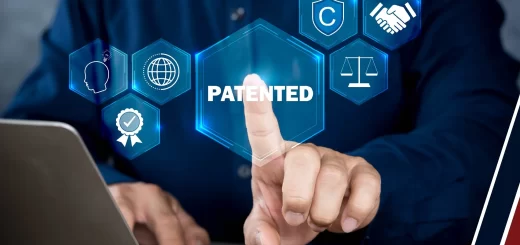How To Generate Revenue from Intellectual Property
When over 6000 patents of Nortel Networks were bought for a whopping $4.5 billion by Apple, Microsoft, Sony and RIM and when Kodak decided to sell its digital imaging patent portfolio for $525M to around 12 licensees (including Apple, Google and Facebook) – they had two things in common. They both were sellers in financial distress and had extremely valuable Intellectual Property.
The point is that a strong Intellectual Property portfolio has the potential to open new revenue stream and breathe new life into a business, even if it is on the verge of failing.
While everyone is aware of traditional modes of funding like venture capital, bank loans and equity financing, very few entities try to make the most of the Intellectual Property they have. In fact, for numerous entities, the sole source of their bread and butter is their Intellectual Property. Let us see how.
Also Read: Understanding Patent Valuation Methods
Table of Contents
Patents (Intellectual Property) Fuelling your Business
Before you even think of monetizing your IP portfolio, it is essential to understand the value of Intellectual Property you have. Is it worth hundreds, thousands or hundreds of thousands? Is your valuation exaggerating or underestimating value of your IP Assets? The answer to this lies in understanding the value through a reliable and comprehensive Intellectual Property Valuation. We at Sagacious Research have developed a robust and time-tested methodology of IP valuation which has been acclaimed by numerous clients across the world. Once you know the true value of your IP, the next step is to understand how it can generate monetary value.
- Licensing and Sales
Licensing is the best and easiest approach to turn Intellectual Property such as trademarks, copyrights and patents into revenues. Financial markets now recognize these royalty revenues as financial resources. Although, royalty financing or licensing is in its early stages, it still commands a multi-billion-dollar market. In biotech and pharmaceutical verticals, most of the businesses make use of their IP assets to get funding in the form of royalty financing. This mode of funding is getting more and more attention, specifically from start-ups and SMEs.
- Mortgage your IP
Loans sanctioned with IP as collateral are another way to get funding for your business. A snack food company based in Pennsylvania used their IP assets to get a $9 million loan. Similarly, a Los Angeles based furniture company used their intellectual property to secure a $6 million loan. The lender or the bank gets your IP as security interest and if you default on the loan, the lender or the bank gets the ownership of your IP. You must ensure that the quality of your IP asset is top notch in order to secure a loan.
- Direct Funding
A survey conducted by the European Patent Office in 2005 reveals that about 40% of small and medium size businesses utilize their patents specifically to protect their technology, since it is what attracts investors. Similarly, a 2010 report by Organisation for Economic Co-operation and Development affirms the success rate of high-quality IPs that were funded with ease.
- Patent Pooling
The idea for patent pooling is to bring together all the relevant IPs on a common platform for investors. This is a win-win situation for both the buyer and seller. The seller is able to monetize idle IP and the buyer is assured complete protection without hassle.
Below are some of the patent pooling examples with the technologies/standards for which they do pooling.
- HEVC Advanced: HEVC/H.265 standard
- MPEG LA: MPEG-2, MPEG-4, IEEE 1394, VC-1, ATSC, MVC, MPEG-2 Systems, AVC/H.264 and HEVC standards
- One-Blue: Ultra HD Blu-ray™ Standards, Blu-ray Disc™ Standards, DVD Standards, CD Standards
- Via Licensing: Covers patents relating to technologies such as: Advanced Audio Coding (AAC), LTE, MG- Multi-Generational Wireless Program, W-CDMA, AGORA-C, 802.11 (a-j), MPEG-4 SLS, MPEG Surround, OCAP tru2way, Digital Radio Mondiale
- Sisvel: LTE/LTE-A and SAE standards
- Avanci: eCall only, 3G (includes 2G and eCall), 4G (includes 2G/3G and eCall)
Different Organizations, Different Monetization Approaches
The perception of Intellectual Property certainly varies from one organization to another. A company might perceive patents as a safeguard against competition while others might be completely dependent on their Intellectual Property for their revenue. Let’s see how different organizations make the best use of the Intellectual Property they have:
- Corporate Entity
It is a common belief that big corporates do not rely on IP related revenue for their operations. However, this is not the case with every billion-dollar company.
Take the case of Qualcomm. It has a very strong patent portfolio with over 16000+ patents, out of which 6000+ active US patents fall in the wireless technology domain. It has a separate business division for their IP business that is focused on generating money out of their IP assets, while also getting royalty revenues from all the smartphone manufacturers using its chipset in their smartphones. Their business impact can be estimated from the fact that Apple used to pay over $500 Million per quarter as royalty fees to Qualcomm.
Apart from licensing, corporates tend to actively sell the patents which do not fall into their current technology domains or find purpose in their future plans. When a technology is in its infancy and is generating interest from the public, these entities tend to file patents in that domain even if it is not their core domain. However, with time, such patents might become useless to them and can be offloaded.
- Academic & Research Institutes
Universities and research institutes are also in the IP ecosystem and own a large number of innovative inventions that back research and education.
The typical approaches that an academic institute can follow to commercialize their IP are:
- Technology Transfer
- Professional cooperative education
- Cross-disciplinary programmes
- Access to venture capitalists
- Fiscal incentives
- Setting up technology transfer office
- Licensing
- Transferring proprietary rights
- Joint ventures between various companies and universities
- University start-ups and incubation
And if these approaches fail, they can always enforce legal rights of their Intellectual Property. In 2017, University of Wisconsin was awarded $4.35 a piece for millions of iPads and iPhones sold by Apple. The total amount comes around $506 million. That was indeed worth every penny and minute spent in the research labs.
Also Watch : Patent Valuation Made Easy with Hybrid Approach! – Webinar
- Individual Inventors
While most of the inventors are technologically brilliant, they are not acquainted with how the IP marketplace functions. They rarely understand the value of IP for a business, which leads to either no monetization or monetization at a meagre value.
When we talk about individual inventors, like an SME, it gets tough to survive in a competitive environment. Even though the SME comes with an innovative idea, product, or a design, getting funds to grow is tough as the competitive solutions for the same problem are already available in the market. Patents can make them stand out.
SMEs, in general, have fewer patents as compared to the big corporates. SME patents are specific to their products and are highly valuable. This gives SMEs an edge to back their products with IP protection in nascent as well as in growth phases.
Through patent valuation SMEs can determine the monetary value of their patent(s) which could be helpful in evaluating the value of related products. A comprehensive valuation report that considers the study of related industry can forecast the value and potential of the patent. This would help the patent owners to fund their business by approaching investors/investment banks.
To conclude, the importance of patent valuation is paramount. So far patents were traditionally measured as a tool to offer Intellectual Property protection. However, with the right approach and innovative strategies, patents also have the capacity to power the business and help it succeed. Reliance on trustworthy services provided by IP experts is the key.
Sagacious IP’s Patent Licensing and Monetization service offers end-to-end solutions, from ranking your patent portfolio to identifying potential licenses, that enables you to transform your IP into a revenue generation unit.
– Dhananjay Kr. Das [ICT Sales (IP Strategy and Solutions)], Gagandeep Singh (ICT Licensing) and The Editorial Team
Having Queries? Contact Us Now!
"*" indicates required fields




